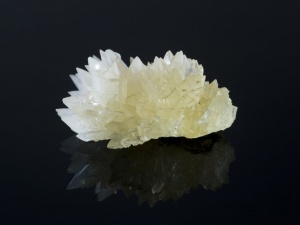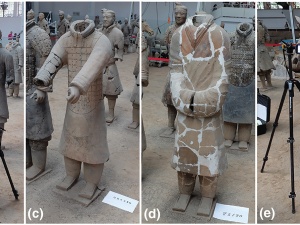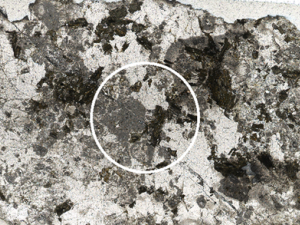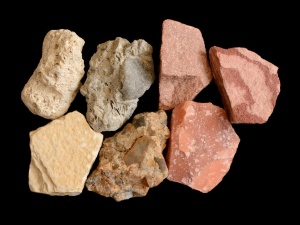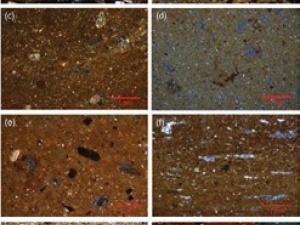Decoration for the Dead: Using XRF to Test Pigment Color on Ancient Egyptian Sarcophagi
The wooden sarcophagi and mummified remains of two women who died 3,000 years ago in Egypt were recently re-examined by a team of scientists from the Denver Museum of Nature and Science and the University of Denver. The team, led by Drs. Bonnie Clark and Keith Miller, conducted a suite of advanced tests on the two sarcophagi, including using X-ray fluorescence (XRF) to determine the material chemistry of the pigments used to paint both the sarcophagi as well as the mummies themselves.

A sarcophagus is a type of coffin that the Ancient Egyptians used to bury their dead. Sarcophagi have a long history in ancient Egypt. By 3,000 years ago, a time called the Third Intermediate Period, the coffins were typically anthropoid (or person-shaped) and painted to resemble the deceased. In the image below, you can see some of the decoration on the coffin including a painted headdress, face, and necklace. The lower part of the coffin is painted with scenes from the afterlife and hieroglyphs of spells for the deceased.

The scientists used a DELTA handheld XRF analyzer to test the paint on the sarcophagi as well as material on the surface of the two mummies. XRF provides material chemistry, making it the perfect tool for this application.
Different color paints were made with different types of elements. The researchers were looking for the presence of iron (used to make red pigments), arsenic (yellow), azurite (blue), malachite (green), sulfur, and calcium. To make the paint, the mineral would be ground into a fine powder. Next, it was mixed with some kind of a binding agent, perhaps egg yolk, or tree resin.
The DELTA analyzer enabled the scientists to identify the specific elements associated with the minerals that were used as pigments to paint the sarcophagi as well as the element composition of material applied to the surface of the mummies. The analyzer enabled the researchers to confirm that the yellow pigments used on two of the sarcophagi from different time periods were distinctly different—one contained arsenic and the other did not. Since X-ray fluorescence is nondestructive, the test did not harm or damage the sarcophagi.
As the scientists continue their study of the sarcophagi, the XRF data are an important component of the overall research. Keep checking in for future updates to this interesting study!

